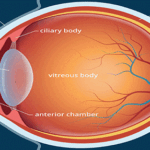INTRODUCTION: In the world of optics and photography, lens transparency plays a crucial role in determining the quality of images captured. Understanding what lens transparency is and
how it affects the final result can help photographers and enthusiasts alike in making informed decisions when selecting lenses for their cameras. Let’s us explore the lens transparency.
When light encounters a lens, it can either pass through, be absorbed, or scatter. Ideally, a transparent lens allows light to travel through it with minimal absorption or scattering, ensuring that the transmitted light remains clear and undistorted. However, factors such as the material composition, surface
quality, thickness, and coatings applied to the lens can all influence its transparency. Understanding and optimizing lens transparency are essential in the design and manufacturing of optical devices. High
transparency ensures that images are sharp, colors are accurate, and details are faithfully represented. Whether it’s improving the clarity of vision in corrective lenses or maximizing the image quality in advanced camera lenses, achieving optimal transparency is paramount for achieving desired optical
performance.
WHAT IS LENS TRANSPARENCY?
Lens transparency refers to the ability of a lens to allow light to pass through it without significant scattering or absorption. In simpler terms, a transparent lens enables light to travel through it with minimal distortion, resulting in clearer and sharper images. The level of transparency of a lens is essential in determining the overall image quality produced.
FACTOR AFFECTING LENS TRANSPARENCY:
Several factors influence the transparency of a lens, including:
Material Composition: The type of materials used in manufacturing the lens can impact its transparency. High-quality optical glass or specialized coatings can enhance transparency.
Surface Quality: Any imperfections on the surface of the lens, such as scratches or blemishes, can obstruct light transmission and reduce transparency.
Thickness: The thickness of the lens can affect how light passes through it. Thinner lenses typically offer better transparency than thicker ones.
Index of refraction: This is a measure of how much light bends or refracts as it passes through the lens material. Higher refractive indices typically result in better transparency, as less light is reflected or scattered at the interface between the lens and the surrounding medium.
Coatings: Special coatings can be applied to lenses to enhance transparency by reducing reflections or blocking specific wavelengths of light. Anti-reflective coatings, for example, help minimize glare and improve overall clarity.
Anti-Reflective Coatings: Coatings applied to the lens surface can minimize reflections and improve transparency by reducing light loss.
Some important factors that play a significant role in maintaining the outstanding clarity of the normal lens are:
Single layer of epithelial cells which is not thick
1. Sparsity and highly packed nature of lens cells. The lens extra capsular space is less than 5% of its total volume, so the zones of discontinuity are very small compared to wavelength of light
2. Characteristic arrangement of lens proteins
3. Pump mechanism of the lens fibre, which regulates the electrolyte and water balance in the lens and thus main tains relative dehydration of the lens.
4. Auto –oxidation: High concentration of reduced glutathione in the lens maintains the lens proteins in a reduced state and ensures the integrity of the cell membrane pump
LAYERS OF NORMAL LENS HAVE DIFFENET REFRACTIVE INDICES: This change is not gradual there is stepwise increase towards the interior. The refractive index of the nucleus is higher (1.40) than the cortex (1.38)owing to the comparative hardness of the nucleus.
CHANGES IN LENS TRANSPARENCY: Appearance of vacuoles(both intracellular and extracellular), local precipitation of proteins resulting in large aggregates and distortion of lens structure, probably all lead to increases light scatter and clinically the changes are described as cataracts. Change in transparency is certainly associate with change in electrolyte and water content.
IMPORTANCE OF LENS TRANSPARENCY:
Achieving high lens transparency is crucial for producing sharp and vibrant images. A transparent lens allows more light to reach the camera’s sensor without distortion, resulting in better contrast, color
accuracy, and overall image quality. Whether capturing landscapes, portraits, or macro shots, optimal lens transparency is key to achieving professional-looking photos.
KEY POINTS:
VISUAL CLARITY: Lens transparency is vital for maintaining clear vision. Whether it’s in eyeglasses, contact lenses, or intraocular lenses used in eye surgeries, transparency ensures that light can pass
through unimpeded, allowing us to see objects sharply and clearly. Without transparency, images would appear blurry or distorted, greatly impairing our ability to perceive the world around us.
OPTICAL DEVICES: In various optical instruments such as cameras, microscopes, and telescopes, lens transparency is essential for capturing high-quality images. Transparent lenses allow light to pass through with minimal distortion or loss, ensuring that the resulting images are faithful representations of the observed objects
MEDICAL APPLICATION: Lens transparency is critical in medical devices and procedures, particularly in ophthalmology. Transparent lenses implanted during cataract surgery, for example, restore clear vision by replacing the clouded natural lens. In diagnostic equipment like endoscopes and surgical microscopes, transparent lenses enable doctors to visualize internal structures with precision, aiding in accurate diagnosis and treatment.
AESTHETIC FASHION: Transparent lenses are also valued for their aesthetic appeal, especially in fashion eyewear. Whether it's trendy sunglasses or stylish prescription glasses, transparent lenses allow wearers to showcase their eyes while still enjoying the benefits of vision correction or sun protection.
TECHNOLOGICAL INNOVATION: The quest for ever-improving lens transparency drives technological innovation in materials science, manufacturing processes, and optical engineering. Researchers and engineers continuously strive to develop new materials with superior optical properties, refine manufacturing techniques to minimize podefects, and invent coatings and treatments to enhance
transparency and performance
ENHANCING LENS TRANSPARENCY:
Photographers can take steps to enhance the transparency of their lenses and maximize image quality:
1. Regular Cleaning: Keeping the lens clean and free of dust, smudges, and fingerprints can improve transparency and prevent light loss.
2. Using Lens Filters: Filters can protect the lens and reduce unwanted reflections, enhancing transparency.
3. Choosing High-Quality Lenses: Investing in lenses made from superior materials and featuring advanced coatings can significantly improve transparency.
CONCLUSION:
Lens transparency is a fundamental aspect of photography that impacts the overall quality of images produced. By understanding the factors that influence transparency and taking proactive measures to enhance it, photographers can achieve outstanding results in their photography endeavors.  Remember, a transparent lens is the gateway to capturing stunning and unforgettable moments with clarity and precision. Efforts to enhance lens transparency involve a multifaceted approach, including careful material selection, precise manufacturing techniques, surface treatments, coatings, innovative designs, and quality control measures. By addressing these factors, engineers and manufacturers strive to create lenses that transmit light with minimal distortion, resulting in clear, crisp images and unimpeded vision.
Remember, a transparent lens is the gateway to capturing stunning and unforgettable moments with clarity and precision. Efforts to enhance lens transparency involve a multifaceted approach, including careful material selection, precise manufacturing techniques, surface treatments, coatings, innovative designs, and quality control measures. By addressing these factors, engineers and manufacturers strive to create lenses that transmit light with minimal distortion, resulting in clear, crisp images and unimpeded vision.
The importance of lens transparency extends beyond mere
functionality; it represents a commitment to excellence in optics and a dedication to improving the way we see and interact with the world. As technology continues to evolve, the pursuit of superior lens transparency remains at the forefront of optical research and development, driving innovation and shaping the future of visual technology. Whether it’s through the refinement of existing materials and processes or the discovery of new breakthroughs, the quest for enhanced lens transparency continues to inspire advancements that benefit society as a whole.









